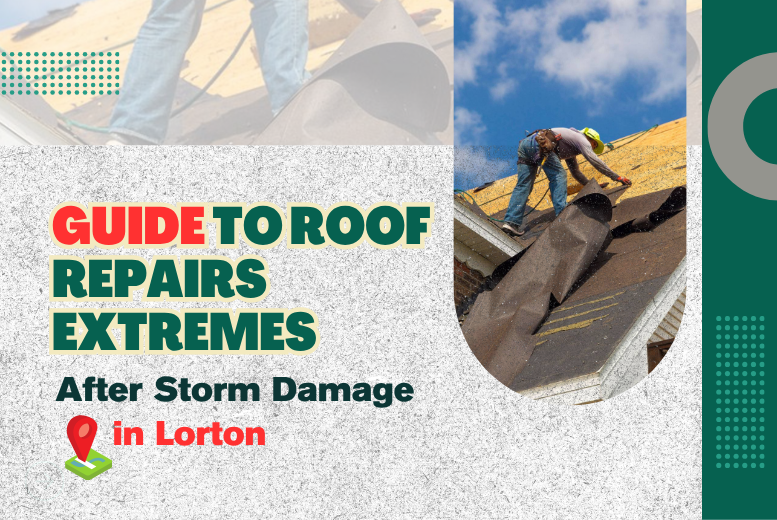Storms can wreak havoc on your home, leaving you with costly repairs and a sense of urgency. If you’re in Lorton and have recently weathered a storm, taking swift action on roof repairs is crucial to protecting your property. Your roof not only shields you from the elements; it plays a vital role in maintaining the overall integrity of your home. Ignoring even minor damage can lead to more significant issues down the line, such as leaks, mold, and structural problems.
In this comprehensive guide, we’ll walk you through the essentials of assessing storm damage to your roof and outline effective repair strategies. From recognizing the subtle signs of damage to knowing when to call in the pros, we’ve got you covered. Protect your home today by staying informed and proactive—because a safe and secure roof is the foundation of a happy home.
What is Storm Damage: Common Roof Issues
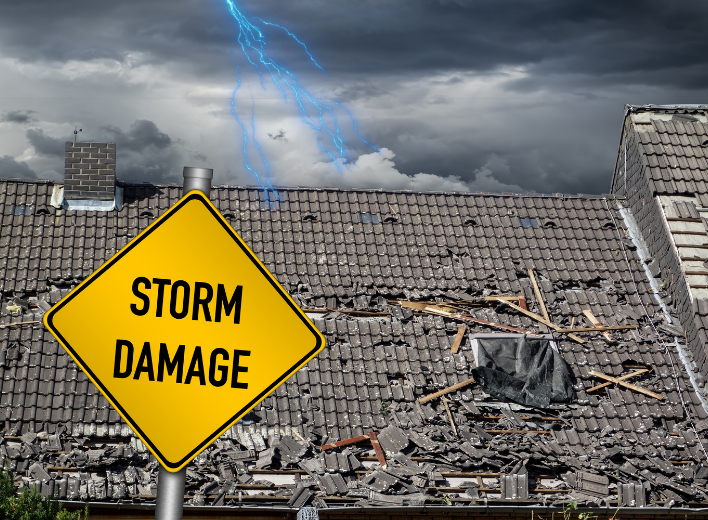
Storms can cause a variety of roof problems, depending on their intensity and type. From high winds and hail to heavy rain and snow, each weather condition brings unique challenges that can weaken your roof and lead to costly repairs if ignored.
Common Types of Roof Damage Caused by Storms:
- Shingle Lifting and Tearing: Strong winds can lift or remove shingles, exposing your roof to water leaks.
- Punctures and Dents from Debris: Flying debris can strike the roof surface, causing cracks and structural weaknesses.
- Hail Impact Damage: Hailstones create small dents that weaken shingles, leading to granule loss and faster aging.
- Water Infiltration: Prolonged rain or melting snow can penetrate the roof, causing leaks and mold growth.
- Snow Load Stress: Excess snow adds heavy weight, potentially damaging the roof deck or causing partial collapse.
- Blocked Gutters and Drainage Issues: Debris and ice buildup prevent proper water flow, leading to water pooling and roof rot.
- Loose or Damaged Flashing: Storms can loosen flashing around vents and chimneys, allowing water to seep inside.
Learn how spring storm damage cleanup differs across seasons and why timing matters.
Regular roof inspections after storms are essential for early detection and repair. Addressing minor damage quickly helps prevent larger structural issues, saving you from extensive repairs and maintaining your home’s safety and value.
Signs Your Roof Needs Repair After a Storm
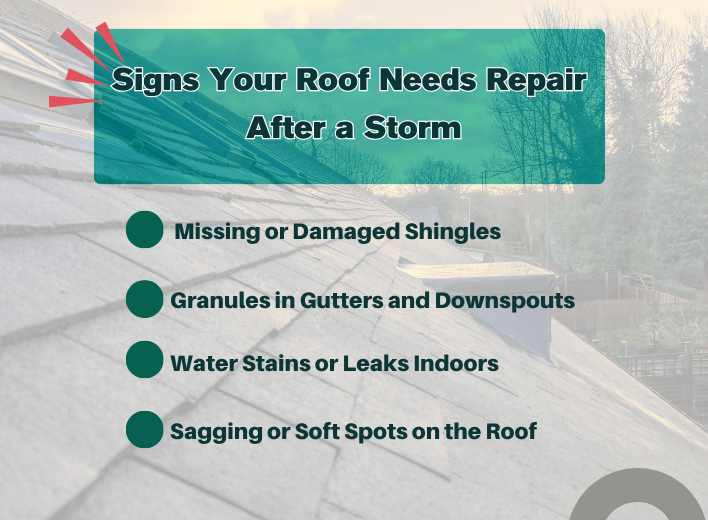
After a severe storm, identifying early signs of roof damage is essential to prevent costly repairs and protect your home’s structure. From missing shingles to water leaks, knowing what to look for ensures you act quickly before the damage worsens.
1. Missing or Damaged Shingles
One of the most visible signs of storm damage is missing or broken shingles. High winds can lift, curl, or tear shingles completely off your roof, exposing the underlayment beneath. This leaves your home vulnerable to leaks and moisture infiltration, which can cause significant interior damage over time. Replacing damaged shingles promptly helps maintain your roof’s durability and weather resistance.
2. Granules in Gutters and Downspouts
If you find loose granules in your gutters after a storm, it’s a warning sign your shingles are deteriorating. Granules protect shingles from harmful UV rays and weather exposure. Learn more about mold prevention after water damage to safeguard your home post-storm. Their loss can accelerate roof aging and reduce its ability to repel water. Regularly cleaning your gutters and monitoring granule buildup can help you spot roof wear early and prevent long-term issues.
3. Water Stains or Leaks Indoors
Brown spots or damp patches on your ceilings and walls often signal water leakage through the roof. Storm damage can create small openings that allow moisture to penetrate, leading to mold growth and structural weakening. Check your attic and ceilings for water stains, and contact a roofing professional immediately to assess and repair any leaks before they spread.
4. Sagging or Soft Spots on the Roof
A sagging roofline or soft areas underfoot indicates moisture damage to the roof decking. This often occurs after heavy rain or snowstorms when water seeps through weakened areas. Left unaddressed, sagging sections can lead to structural instability and even roof collapse. If you notice uneven areas or dips, schedule a professional roof inspection right away to ensure your home remains safe and secure.
The Importance of Timely Roof Repairs

Timely roof repairs are essential to maintaining the integrity and safety of your home. When storm damage is left unaddressed, it can lead to a host of problems that can become more severe and costly over time. For broader impact coverage, check our guide on ceiling damage repair after a leak to understand hidden signs. Water infiltration is one of the most significant risks associated with delayed roof repairs. Once water enters your home, it can damage insulation, electrical systems, and structural components. This can result in expensive repairs and pose a safety hazard to your family.
Moreover, ignoring roof damage can lead to the growth of mold and mildew. Mold thrives in damp environments and can spread quickly once it takes hold. Mold spores can affect indoor air quality and pose health risks, particularly for individuals with respiratory conditions or allergies. Addressing roof leaks and water damage promptly can help prevent mold growth and protect the health of your household.
Timely roof repairs also help to preserve the value of your home. A well-maintained roof enhances curb appeal and can increase the resale value of your property. On the other hand, a damaged roof can be a red flag for potential buyers, making it more challenging to sell your home. By investing in regular inspections and prompt repairs, you can ensure that your roof remains in good condition and continues to provide reliable protection for your home.
DIY vs. Professional Roof Repairs: What You Need to Know
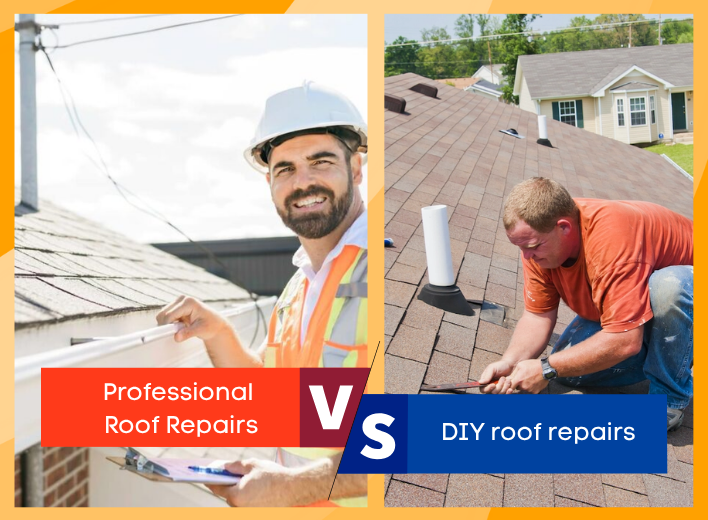
When storm damage strikes, homeowners often debate between fixing the roof themselves or hiring a professional. While DIY might seem cheaper upfront, professional repairs ensure long-term safety, durability, and compliance with insurance and building standards.
The Risks of DIY Roof Repairs
DIY roof repairs can be dangerous without proper training, tools, and safety gear. A small mistake can lead to serious injury or further roof damage. Unsealed gaps, incorrect shingle placement, or poor materials often result in costly future repairs.
Why Professional Expertise Matters
Professional roofing contractors bring years of experience and specialized knowledge. They can identify hidden issues such as structural weakness or moisture infiltration that DIY efforts often miss. Their expertise ensures reliable, lasting repairs that meet safety and building codes.
Cost Comparison: Short-Term vs. Long-Term
While DIY repairs may save money initially, professional work provides long-term value. Poorly executed DIY jobs can worsen damage over time, leading to expensive replacements. Investing in expert service ensures durability, efficiency, and proper insurance documentation.
Warranties and Peace of Mind
Hiring licensed roofers comes with warranties and post-repair support. These guarantees protect your investment and ensure accountability if issues arise later. With professionals, you gain not only quality repairs but also the confidence that your home is fully protected.
Steps to Take Immediately After a Storm
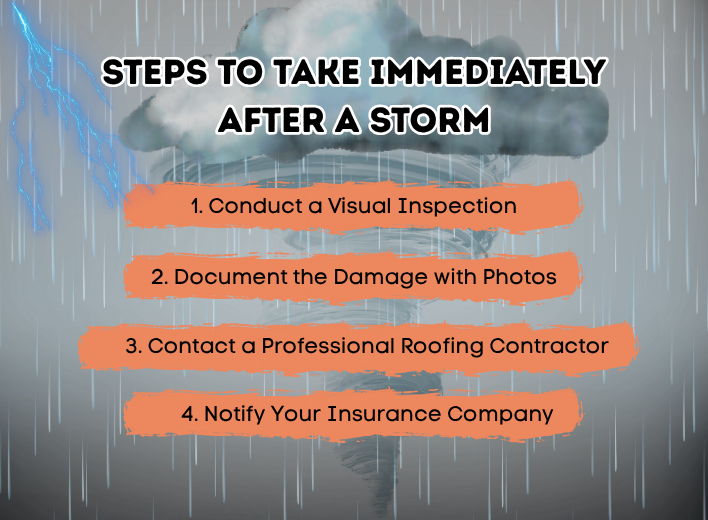
After a storm hits, acting quickly is crucial to protect your home and prevent further damage. Timely assessment and documentation of any roof issues can save money, reduce risk, and streamline insurance claims.
1. Conduct a Visual Inspection
Start by carefully surveying your property for obvious damage, including missing or cracked shingles, fallen debris, and water stains on ceilings or walls. Note every issue, as these observations will help guide repairs and support your insurance claim.
2. Document the Damage with Photos
Take clear, detailed photos of all affected areas from multiple angles. Include both close-ups and wide shots to capture the full scope. This documentation is essential for insurance purposes and provides a reliable record for contractors.
3. Contact a Professional Roofing Contractor
Reach out to a licensed, reputable roofing contractor to schedule an inspection. Professionals can assess structural damage, recommend necessary repairs, and ensure work meets safety standards, protecting your home from future issues.
4. Notify Your Insurance Company
Report the storm damage to your insurance provider promptly. Provide your documentation and contractor estimates to expedite the claims process. Acting quickly ensures you receive the necessary coverage to repair your roof efficiently and effectively.
In cases of severe exposure, refer to our post-fire home inspection checklist—it applies well to storm aftermath too.
How to Choose a Reliable Roofing Contractor in Lorton

Finding a trustworthy roofing contractor in Lorton is essential for ensuring your roof repairs are safe, durable, and high-quality. A reliable contractor protects your investment, minimizes risks, and ensures the work meets local standards and regulations.
Tips for Choosing a Reliable Contractor:
- Ask for Personal Recommendations: Seek referrals from friends, family, and neighbors who have recently had roofing work done. Firsthand experiences provide valuable insights into workmanship and reliability.
- Check Online Reviews and Ratings: Explore platforms like Google, Yelp, and the Better Business Bureau to evaluate a contractor’s reputation and customer feedback.
- Verify Licensing and Insurance: Ensure the contractor holds a valid license and up-to-date insurance to protect you from liability and guarantee compliance with local regulations.
- Request Multiple Estimates: Obtain detailed quotes from several contractors. Compare costs, materials, timelines, and communication to select the best balance of quality and value.
- Evaluate Experience and Expertise: Choose a contractor with proven experience handling roofing projects similar to yours, using high-quality materials and professional techniques.
- Assess Communication and Transparency: Reliable contractors provide clear, transparent estimates, answer questions promptly, and maintain open communication throughout the project.
This structured approach ensures you select a qualified roofing contractor in Lorton who delivers dependable repairs, high-quality results, and peace of mind.
Cost Factors for Roof Repairs After Storm Damage

Roof repair costs after storm damage can vary widely, influenced by the severity of damage, materials, labor, and insurance coverage. Understanding these factors helps homeowners plan financially and make informed decisions for timely and effective repairs.
1. Extent of Damage
The severity of roof damage directly impacts repair costs. Minor issues like a few missing shingles are more affordable, while extensive damage or structural repairs can significantly increase expenses.
2. Roofing Materials
The type and quality of roofing materials influence the total cost. Asphalt shingles are generally less expensive, while metal, tile, or specialty materials can raise the repair or replacement budget.
3. Labor Costs
Labor costs depend on repair complexity, contractor expertise, and local market demand. After major storms, high demand may increase rates, making it essential to obtain multiple estimates for comparison.
4. Insurance Coverage
Homeowner’s insurance can offset repair expenses. Coverage varies, so reviewing your policy and coordinating with both the insurance company and roofing contractor helps maximize benefits and minimize out-of-pocket costs.
These factors collectively determine the overall cost of storm-related roof repairs, helping homeowners budget and make informed choices for protecting their property. And if your home faces multiple issues beyond the roof, consider hiring a certified restoration contractor in your area.
Conclusion: Ensuring Your Home's Safety and Longevity
Protecting your home from storm damage is essential to maintaining its safety and longevity. By understanding the common issues that can arise from storms, recognizing the signs of roof damage, and taking timely action on repairs, you can prevent minor problems from becoming major headaches. Whether you choose to tackle minor repairs yourself or hire a professional roofing contractor, it’s important to prioritize the integrity of your roof to safeguard your home and family.
Choosing a reliable roofing contractor in Lorton and understanding the insurance claims process can help streamline repairs and ensure that you receive the coverage you need. Regular inspections and preventative measures can further protect your roof from future storms, minimizing the risk of damage and extending its lifespan. By staying informed and proactive, you can maintain a safe, secure, and comfortable home environment for years to come.
Dealing with Water Damage? Let the Experts Restore Your Home—Fast.
Don’t let floor, roof, or structural damage linger after a storm or water damage. Our certified restoration team in Virginia responds quickly to secure your property, clean residues, and bring your home back to life.
👉Request immediate storm damage restoration and get a free inspection today.
In conclusion, roof repairs after storm damage are a critical aspect of home maintenance that should not be overlooked. Taking the time to assess, repair, and protect your roof can save you from costly repairs and ensure the long-term health of your home. By following the guidance in this comprehensive guide, you can confidently navigate the process and keep your home in top condition, no matter what the weather brings.

